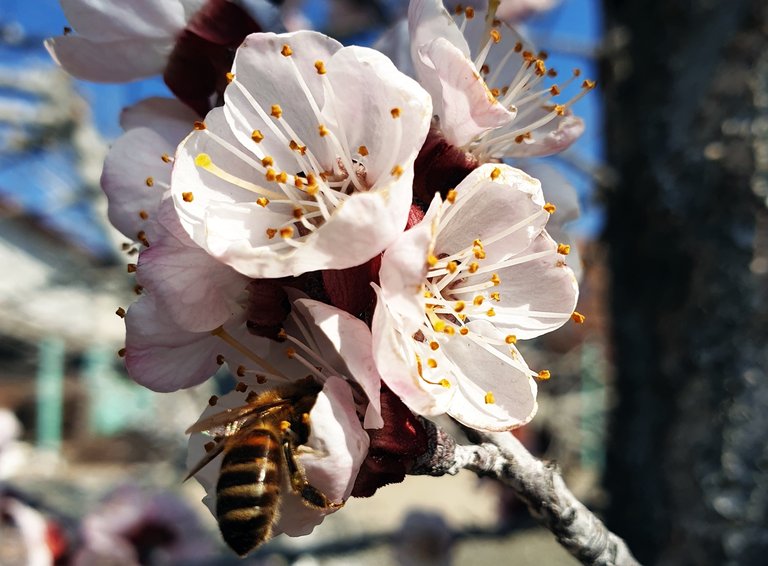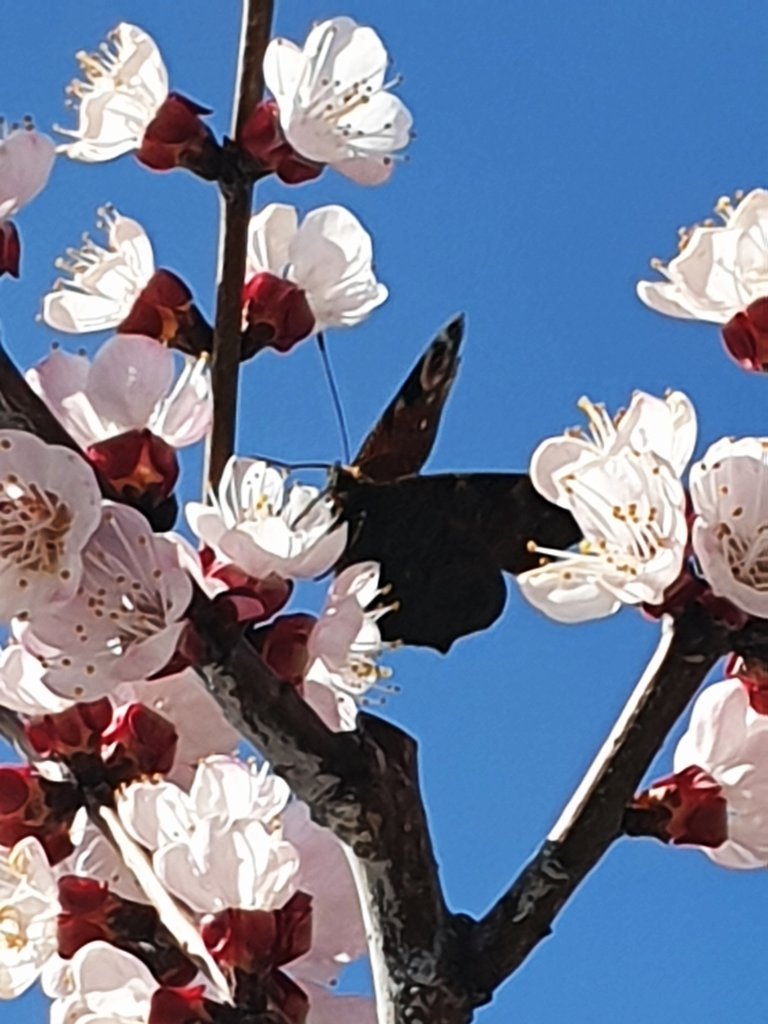Hi guys!
Today we're taking a walk back in time through my home garden during springtime, and I want to see the apricot blossoms together.


This is my garden, all the fruit trees are mostly treated organically against pests.


The Apricot is a highly prized small to medium-sized fruit tree of the Rosaceae family. Its Latin name, Prunus armeniaca, translates as Armenian plum (from Armenia).
I have a great respect for these bees, without which we would not enjoy the extraordinary taste of fruit.
.jpg)


It would seem that its origin is not necessarily Armenia, but rather China, the Himalayas and other temperate parts of Asia, areas where it was cultivated two millennia before Christ for its delicious fruit.



The apricot is very similar to the peach, it makes white-pink flowers, and its fruits are, when ripe, yellow-orange, sometimes stained with red, with a soft flesh around a hard symphora and a velvety skin.



They taste somewhere between plums and peaches, not very juicy, but very tasty. Apricots are rich in fibre, vitamin C and beta-carotene (vitamin A), as well as iron, calcium and phosphorus.

It is believed that, by eating apricots regularly, we can avoid eye diseases associated with ageing. They are eaten fresh and in jams, jellies or compotes. Being very perishable, they dry out and are then eaten as dried fruit, preserved or, rehydrated, as a culinary ingredient.

Cold-pressed apricot kernels are also used to make an oil, which is used in the food industry, cosmetics, perfumery and massage. For a long time, it has been used as cooking oil.

In medicine (but not only!), apricot kernel oil is used as a substitute for almond oil and is much cheaper.

I discovered another guest in the garden.



📷 Picture -Apricot Blossom
Model -Galaxy S9
Photographer -@triplug
Location -Western Romania
Thank you in advance to all of you who have stopped by and those who support me.